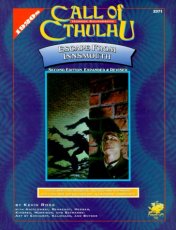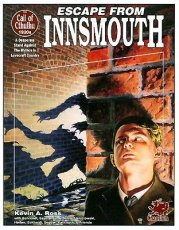The night had begun well. I delivered my Best-Man speech, playing up on the idea that Thunderbird was a womanizer who hadn’t liked Kelly (the bride) from the beginning. I followed two heart-warming speeches from the groom and maid of honour, and could tell I had struck the right note when, as I sat down, there was a dejected, gloomy atmosphere amongst the wedding party. Then Jack (aka Thunderbird) went mingling with the guests, and to my delight made a number of jokes about how he could have sealed up the supposed victims of his organ harvesting with his ‘lazer gaze’.
Kelly, meanwhile, was sitting dejectedly on the stair with the remaining bridal party. Now I asked the ‘wait staff’ to deliver my note and folder to ‘Shadow’. I was testing Shadow to see if she was still capable of dark deeds, and the note instructed her to deliver the attached folder to the bride. The folder contained embarrassing pictures of the groom at a strip club, drunk and singing from the stag night (not the most incriminating - but it was what I had to work with, and I thought it might just tip the balance on her unhappiness with him). Shadow (aka Gwen) did so, and I was pleased.
Next my note was delivered to Kara, the cyborg who had defended Thunderbird from my malicious tabloid accusations, thus earning her a place in my plans. I sent her a note (supposedly from one of the magicians present) telling her that she had a virus in her system which would cause her to kill everyone present unless she delivered $5 million to the magician. To my delight she did, although I believe that the magician didn’t take the money. I had also sent a love note, supposedly from Kara, to one of the police detectives professing a desire to ‘interface’. This turned out to have broader ramifications than I had anticipated.
About this time Loki talked me (and Puck) into separating the wolf spirit from the superhero Fenris under the guise of a group wedding photo. I helped out, as it seemed likely to spread some mischief, and then made myself scarce as I didn’t want to be incriminated in the subsequent aftermath (there was quite a bit, and I did use this opportunity to voice my suspicions about ‘Lew’ the building manager aka Loki effectively double-crossing him).
I made sure to check in with Detective Bud Stone at regular intervals, to amplify the increasingly bizarre threats to the party (and world) and discuss the nature of Chaos Gods. Good times.
Now I made good on another of my objectives and spoke with ‘Shadow’ aka Gwen revealing that I was actually Coyote. Jackie had sent me some very cool fiction around how conflicted Gwen was before the game, before she knew my identity. Gwen had apparently just been dumped, and I tried to seize the moment to remind her how much fun being bad could be… It was the first of several encounters, where I tried, but ultimately failed, to talk her into coming to the dark side – but to be fair, it’s pretty hard to compete with an Angel cop.
About this time Loki told me that we had unwittingly brought about
Ragnarok, by our releasing the wolf spirit. I told him that as it was his plan to cut the spirit free, it was down to him to fix things, and to my surprise, and his credit – he actually did, even though it alerted the party-goers to his identity and ultimately brought about his demise. At one time it seemed that we might need a willing human sacrifice to save the day, so I tried very hard to hint that only a true hero aka Thunderbird might be willing to make the supreme sacrifice, but alas he wasn’t biting and apparently another method was found. I did manage to arrange some media mischief, after I convinced Thunderbird to save some folks caught up in the wake of the devouring wolf.
The party was getting pretty wild now, with magical rituals galore, and I was getting nervous that I’d be rumbled soon, so I triggered my pièce de résistance, an arrest warrant for the groom’s father, Harry. I had taken pains to use a different envelope and format to the other letters, in case someone got wise to the sender, and hoped that Harry would be lead out in handcuffs, much to the distress of the groom. Unfortunately all the parties were very mature, and no immediate arrest was made. I even alerted to bridal party, lest they miss it, but alas it was not until the end of the night that this scene was played out, after Coyote had left.
Now things were getting downright hostile at the party. Puck was destroyed, and Loki fled, to return for a brief showdown – the ‘omnipotent’ gods were going down like flies. Gwen urged me to leave, and given that the newly reincarnated Galahad and Merlin were actively searching for me, not to mention her Angel cop boyfriend, Coyote did just that, leaving Justin Mallone with a killer hangover and no memory of what had happened.
In review; it was a brilliant game and great fun. Jenni and Paul did a fantastic job, especially as I learn about the other plots that were taking place. I am a little disappointed that I failed in my primary goal of messing with Thunderbird, as
his own account seems to indicate that a love triangle caused him much more grief than all my efforts combined. I’m also torn as to whether I should have revealed myself, and faced Thunderbird down, forcing him to destroy Justin. But leaving the party when I did, just felt right for the Coyote.









